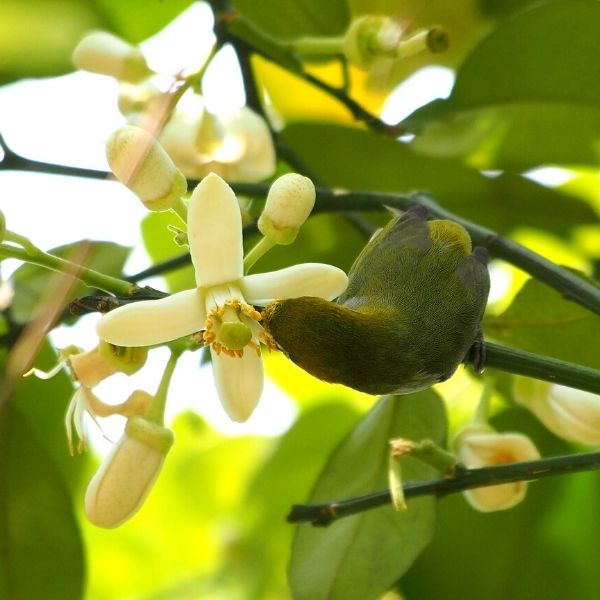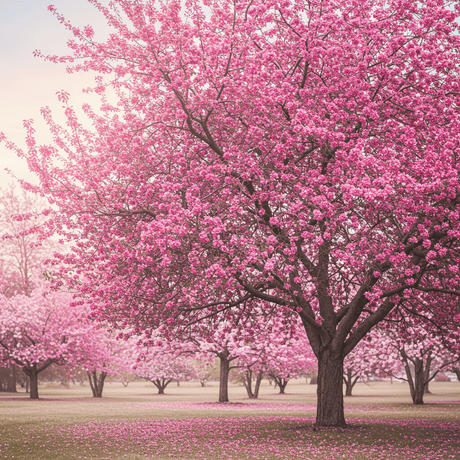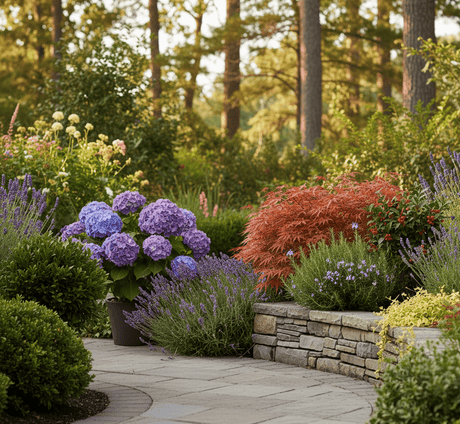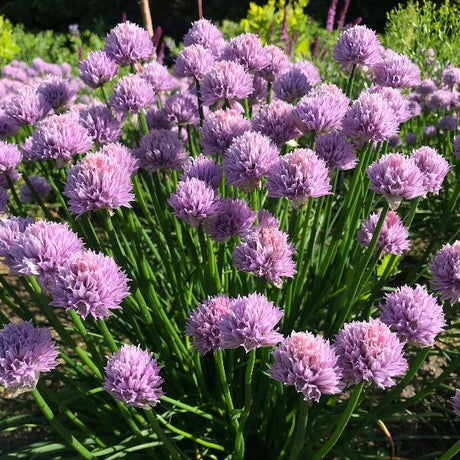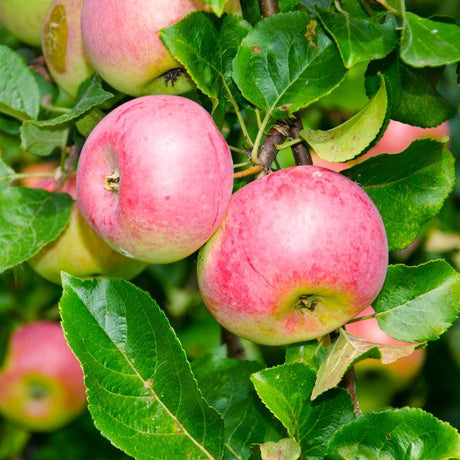Rio Red Grapefruit Tree
Citrus x 'Rio Red'
- Stay Protected with Plant Sentry ™
Rio Red Grapefruit Tree - #3 Container is backordered and will ship as soon as it is back in stock.
Plant Sentry™
Plant Sentry™

Plant Sentry™ Protected
Your order is protected by our compliance system that:
- Prevents restricted plants from shipping to your state
- Ensures plants meet your state's agricultural requirements
- Protects gardens from invasive pests and diseases
Delivery and Shipping
Delivery and Shipping
Delivery and Shipping
Fast, Safe Plant Delivery
Ships in 3-4 business days • Tracking provided • Weather protected
| Under $50 | $9.99 |
| $50 - $99.99 | $14.99 |
| $100 - $149.99 | $16.99 |
| $150 - $198.99 | $24.99 |
| $199+ | FREE |
✓ Zone-specific timing • ✓ Professional packaging • ✓ Health guarantee
Understanding Plant Options
Nature Hills offers plants in two main formats:
- Container Plants: Grown in pots with soil, sized by container volume and plant age
- Bare Root Plants: Dormant plants without soil, sized by height measurements
Container Plant Sizes
Container sizes indicate plant age and growing capacity rather than liquid volume equivalents. Our containers follow industry-standard nursery "trade gallon" specifications, which differ from standard liquid gallon measurements.
Young Plants (6 months to 18 months old)
| Container Size | Actual Volume | Metric Equivalent |
|---|---|---|
| 2" x 2" x 3" | 0.18 - 0.21 dry quarts | 0.20 - 0.23 dry liters |
| 4" Container | 0.31 - 0.87 dry quarts | 0.35 - 0.96 dry liters |
| 4.5" Container | 0.65 dry quarts | 0.72 dry liters |
| 6" Container | 1.4 dry quarts | 1.59 dry liters |
| 1 Quart | 1 dry quart | 1.1 dry liters |
| 5.5" Container | 1.89 dry quarts | 2.08 dry liters |
Established Plants (18 months to 2.5 years old)
| Container Size | Actual Volume | Metric Equivalent |
|---|---|---|
| 2 Quart | 2 dry quarts | 2.2 dry liters |
| #1 Container | 2.26 - 3.73 dry quarts | 2.49 - 4.11 dry liters |
| 5" x 5" x 12" | 3.5 - 4.3 dry quarts | 3.85 - 4.74 dry liters |
Mature Plants (2-4 years old)
| Container Size | Actual Volume | Metric Equivalent |
|---|---|---|
| #2 Container | 1.19 - 1.76 dry gallons | 5.24 - 7.75 dry liters |
| #3 Container | 2.15 - 2.76 dry gallons | 8.14 - 12.16 dry liters |
Large Plants (3-5 years old)
| Container Size | Actual Volume | Metric Equivalent |
|---|---|---|
| #5 Container | 2.92 - 4.62 dry gallons | 12.86 - 20.35 dry liters |
| #6 Container | 5.25 - 6.01 dry gallons | 23.12 - 26.42 dry liters |
| #7 Container | 5.98 - 6.53 dry gallons | 26.34 - 28.76 dry liters |
Bare Root Plants
Bare root plants are sold by height from the root system to the top of the plant. Plants may exceed minimum height requirements.
Common Sizes:
- Trees: 1 foot, 2 feet, 3 feet, 4 feet, 5 feet, 6 feet
- Shrubs & Perennials: 1 foot, 18 inches, 2 feet
Important Notes
Container Volume Specifications
- Trade Gallon Standard: Our containers follow industry-standard "trade gallon" specifications established by the American National Standards Institute (ANSI Z60.1) for nursery stock
- Volume Variations: Actual soil volume may vary due to plant root systems and growing medium settlement
- Age Indicators: Container size primarily indicates plant age and maturity rather than liquid volume equivalents
Growing Conditions
- Plant size can vary based on variety and growing conditions
- Container size helps indicate plant maturity and establishment level
- Larger containers generally mean more established root systems and faster landscape establishment
Seasonal Availability
- Bare root plants are available seasonally when dormant
- Container plants are available throughout the growing season
- Specific varieties may have limited availability in certain sizes
Questions?
For questions about specific plant sizes or availability, please contact our plant experts who can help you choose the right size for your landscape needs.
Plant Highlights
Rio Red Grapefruit Tree highlights at a glance!
-
Botanical Name
-
Brand
-
Growth RateModerate
-
Mature Height
-
Mature Width
-
Leaf Color
-
Flower Color
-
Pollinator FriendlyYes
-
Pollinator Required
-
Bloom PeriodLate Spring
Characteristics
Where To Plant
When To Prune
- Late Spring
Water & Moisture Needs
- Moderate
Sunlight Needs
Soil Needs
- Well Drained
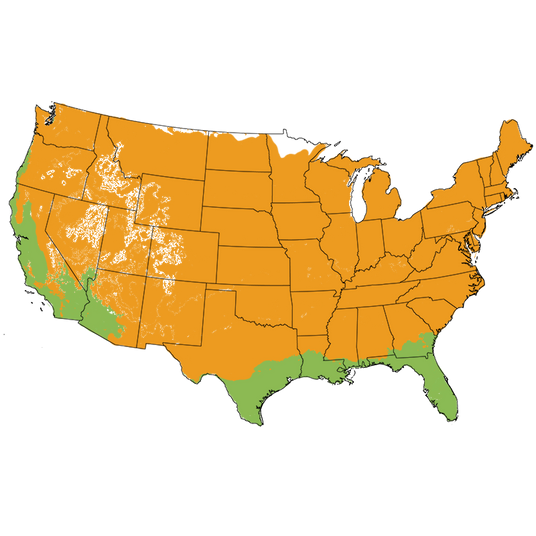
Growing Zones
Best Selling Home Gardener's Dream Rio Red Grapefruit!
- Pale Yellow Rind & Red Blush
- Exceptionally Sweet Juicy Flavor
- Dark Ruby-Red Flesh
- Beautiful Dark-Green Evergreen Foliage
- Naturally Dwarf Tree
- Easy Care & Low Maintenance
- Sweet Smelling White Flowers
- Ornamental Beautiful Specimen!
- Large Containers & Planter Ready!
- Full Sun!
- High Yield!
- Resistance to Cold & Heat
- Hedges & Privacy Screening
If you can only grow one Citrus tree, Rio Red Grapefruit (Citrus x 'Rio Red') should be it! This huge, heat-loving ruby red Grapefruit variety with an amazing sweet taste that is almost addictive!
The juicy, sweet and tangy deep-red flesh is delicious! Eat it fresh for breakfast or as a dessert. Bake it in a tart. Toss it in a salad. Stir it in a sangria. Squeeze it for juice - you won't even need to add sugar. Rio Red is the gold standard in Pink Grapefruit!
Container-sized with little pruning and low maintenance, the Rio Red is perfect for smaller-sized yards or planters while the fruit grows full-sized gems!
The green fruit becomes pale yellow and the rind develops a pink blush when ripe in winter!
Originating in the Rio Grande Valley, this Citrus variety features beautiful dark-green, evergreen foliage and creates the perfect backdrop for the fragrant white blooms and winter's glowing orbs! Ornamental on their own, these are compact and vigorous trees for any home garden application!
How to Use Rio Red Grapefruit In The Landscape
The pretty trees are easy to care for and attractive in the landscape. These natural dwarfs fit into even the smallest garden. Growers in colder growing zones won't miss out either, simply bring your tree indoors gradually for the winter and set them back outside after any chance of frost in the summers!
Standout specimens or accent tree, these provide low privacy or shade around your landscape and garden beds with little work from you!
The bushy, evergreen growth makes for a dual-purpose hedge and screen with compact branching for privacy! The healthy fruit and fragrant blooms mean this tree has year-round appeal and interest!
#ProPlantTips For Care
Citrus fruit trees need full sun to have the most flowers and therefore the largest crop of fruit! Indoor growers may need grow lights to extend their sunlight hours.
Grapefruit also require very well-draining soil on the acidic side. Any medium with excellent drainage is best, preferring to dry out slightly between waterings. Citrus prefers low moisture environments.
Sitting in water will lead to root rot, so be sure your site doesn't pool after a heavy rain, and your containers and planters have excellent drainage holes.
Fertilize with an acid-loving plant fertilizer such as Dr. Earth Acid Lovers Organic and Natural Premium Concentrate Fertilizer 3-4 times a year.
Keep your investment protected from cold drafts and sudden temperature or environmental changes, as this will result in leaf drop and stress. However, Rio Red is cold-resistant while thriving in the heat.
Protecting Container Citrus From Cold
Although it's famous for growing in warmer regions, it can also thrive in colder areas as long as the tree is brought indoors prior to the first frost of winter.
If you're growing these tropical trees in the ground in the lowest of their favored growing zones, they need to be planted in a sheltered spot to avoid the worst of the chill. If a spot like that is unavailable, then you are better off planting in a large, deep container.
In borderline growing zones, begin slowly acclimating your tree indoors or into a protected location, eventually moving your tree inside in bright indirect sun for the winter if the temperatures in your area ever dip below that 40°F range. In spring, reverse this process and begin acclimating your tree to again be back out in the full sun all summer. This reduces stress and leaf drop.
The healthy three-year-old trees Nature Hills ships are garden-ready. Producing fruit between 3 to 5 years of age, you won't be waiting long for your first crop!
You will have so much fruit you'll have a kitchen full and still be sharing it with family and friends. Rio Red Grapefruit is the tree to work into your garden this year! Order your own sweet Red Grapefruit trees from Nature Hills before they're gone!
Worldwide Red Grapefruit Favorite
The red Grapefruits of Texas are big, just like everything else in Texas. The marketplace is big, too, red Grapefruits are the leading Citrus crop grown in Texas. In fact, in 1993 Texas named the Red Grapefruit as its official state fruit. Reds are climate proven in Texas, and the Rio Red is the best of the best.
John H. Shary is known as the 'Father of the Texas Citrus Industry'. Upon his arrival in Texas from Omaha, Nebraska, he was inspired by how well the white and pink varieties of Grapefruit grew in the Lower Rio Grande Valley. Shary felt that there was a future in farming this special fruit, and in 1914 he cleared 16,000 acres and began planting white Grapefruit.
In 1920, Grapefruits began shipping commercially and around 1929, the productive orchards of the Rio Grande began to produce red sports on limbs of white and pink varieties.
The red blush on these odd outcroppings were noticeable. Upon cutting the fruit open, it was discovered that the interior flesh was red. Darker red selections were discovered until finally it was decided to market these unique fruits under one name. Hence, the Ruby Grapefruit brand was born.
Record winter freezes in 1949, 1951 and 1962 killed back most of the older white and pink selections. Red selections proved to be a bit more winter hardy, but not enough to avoid major damage in these recurring freezes.
The research to breed a hardier red variety took on a higher priority after the 1962 freeze. Dr. Richard A. Hensz of the Texas A&I Citrus Center, now part of Texas A&M, began working with the Brookhaven National Laboratories to stimulate the development of sports, a process done more randomly in nature.
In 1965, Dr. Hensz introduced the Star Ruby, which was of fine quality and fairly hardy. However, unfortunately it sets irregularly so the Star was not widely planted in commercial orchards.
Then in 1976, Dr. Hensz discovered the Rio Red limb sport growing on a tree produced from Ruby Red seed. It was released to commercial growers in 1984.
Rio Red has all the qualities that the growers are looking for, which include superior hardiness, great flavor with high sugar and deep red flesh. Rio Red Grapefruit also grows well on alkaline soils, a problem so common for Florida and Texas growers. Over time, the Rio Red Grapefruit has become the preferred red Grapefruit throughout the world in both the commercial and the home garden markets.
A fast grower, the Rio Red begins production almost immediately and should be pruned to keep it below 10 feet. Once established in suitable climate conditions the Rio Red can be picked almost year-round, often holding two crops on the tree at one time.



